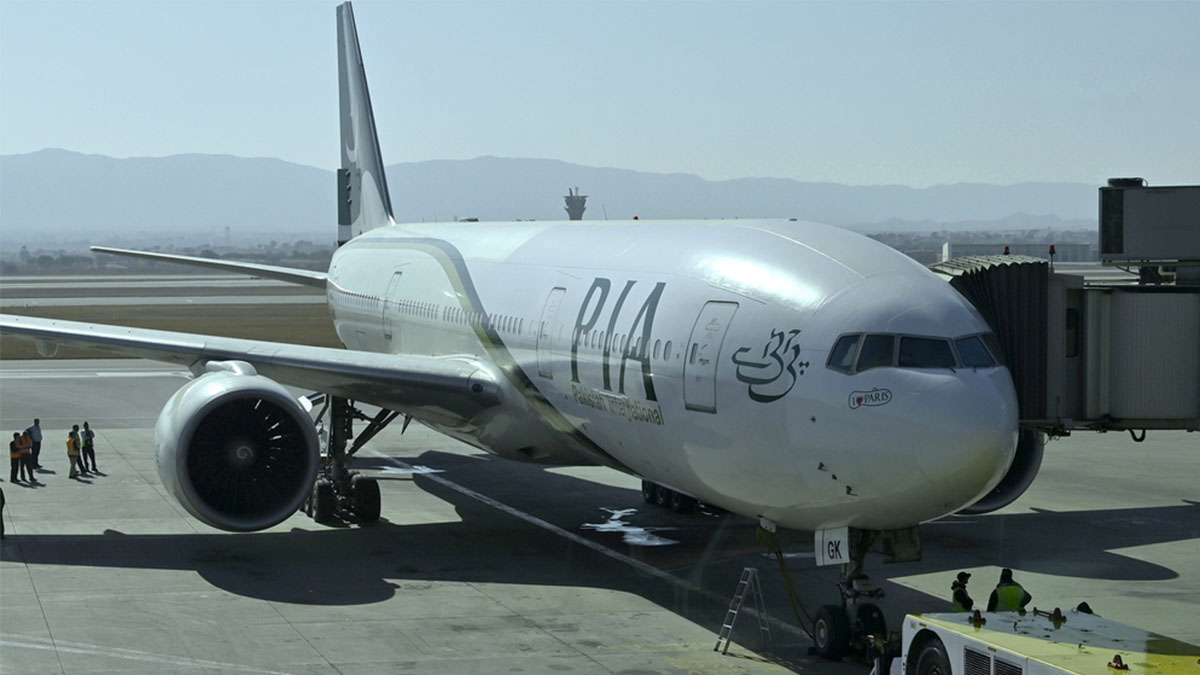) |
|
The recent airspace ban imposed by India on Pakistani aircraft, triggered by renewed tensions, has dealt a significant blow to Pakistan’s already struggling aviation sector. This action not only exacerbates the existing economic vulnerabilities of Pakistan International Airlines (PIA) but also undermines the country's regional connectivity and its broader diplomatic ambitions, particularly concerning the Vision East Asia Policy. The recurring pattern of prioritizing political signaling over practical economic considerations, as evidenced by Pakistan's reciprocal airspace closure to Indian airlines, underscores a reluctance to learn from past mistakes. This tit-for-tat approach, while symbolically forceful, ultimately inflicts more significant economic damage on Pakistan, primarily through lost overflight fees and increased operational costs for its national carrier. The parallels with the airspace closure following the Pulwama attack in 2019 are striking, with Pakistan’s aviation sector incurring substantial losses, estimated at nearly $100 million, and daily deficits of approximately $760,000. The current scenario is poised to replicate this trajectory, further straining Pakistan's already precarious financial situation.
The economic fallout from the airspace ban is multifaceted. Initially, it affects Indian airlines, which are forced to reroute flights, leading to increased fuel costs and travel times. However, the more severe consequences are borne by Pakistan. The Civil Aviation Authority (CAA) has reported significant deficits, with the 2019 closure alone resulting in losses of Pakistani Rs 8.5 billion (approximately $50 million). PIA, already burdened with financial insolvency, faces particularly acute challenges. The airline's limited regional reach, currently serving only Colombo in Southeast Asia, underscores its inability to capitalize on strategic diplomatic ties. During the 2019 airspace restrictions, PIA suffered daily losses of around $460,000, contributing substantially to the overall $100 million loss in the aviation sector. Beyond passenger routes, the impact extends to cargo operations, where rerouted flights cause delays in the delivery of perishable goods, textiles, and industrial commodities. These delays can lead to breaches of international contracts and render Pakistani exports less competitive due to increased transportation costs and logistical inefficiencies. The overall downturn in the aviation sector has cascading effects on the national economy, potentially leading to layoffs, a decline in tourism, and reduced investor confidence. The compounded pressure on PIA and other aviation entities may necessitate government bailouts, diverting scarce resources from critical sectors such as health, education, and infrastructure.
Furthermore, the airspace restrictions pose a significant threat to Pakistan's Vision East Asia Policy, launched in the early 2000s to foster stronger diplomatic, cultural, and economic ties with East and Southeast Asian nations. While Pakistan has historically maintained close relations with China, this policy aims to broaden regional outreach to countries like Japan, South Korea, Malaysia, Indonesia, and Vietnam. The inability to fly through Indian airspace significantly hampers Pakistan's ability to maintain and expand trade and diplomatic engagement with Southeast Asia. The policy's goal of economic diversification now faces a major setback, with efforts to promote cultural diplomacy, educational exchanges, and tourism stalling under the weight of logistical complications. Recent efforts to revitalize this policy, including halal food and defense cooperation with Malaysia and Indonesia, and infrastructure discussions with Japan and South Korea, are becoming increasingly difficult to sustain. Even travel to Bangladesh, an emerging diplomatic partner, now requires circuitous routes. The India-Pakistan rivalry has further hampered Pakistan's connectivity and people-to-people exchanges with the broader region, exacerbating existing weaknesses in Pakistan's regional ties.
The timing of the Indian airspace ban could not be worse for PIA's privatization efforts. The Pakistani government recently made its third attempt to privatize the airline, inviting domestic and international investors to submit Expressions of Interest for acquiring a significant stake in the restructured entity. Previous privatization attempts have failed spectacularly, with bids falling far below the reserve price due to unresolved taxation issues and PIA's legacy debt. The current airspace restrictions further diminish investor confidence, as potential buyers weigh the challenges of operating a loss-making airline with shrinking regional access and diplomatic uncertainty. The prospect of acquiring PIA appears increasingly bleak under these circumstances, potentially scuttling the entire privatization initiative. The operational challenges faced by Pakistani airlines further compound the problem. Limited financial resources prevent airlines from upgrading fleets, conducting proper maintenance, or expanding services, leading to deteriorating service quality and reduced competitiveness. A shortage of skilled professionals, including pilots, engineers, and ground staff, affects both reliability and safety. Outdated infrastructure, with many airports lacking modern facilities, contributes to frequent delays and poor passenger satisfaction. The competition from Gulf-based carriers, with superior service quality and global connectivity, further erodes the market share of Pakistani airlines.
Pakistan's airports suffer from ageing infrastructure, limited runway capacity, and inadequate passenger-handling systems. A significant number of airports remain non-operational, incurring maintenance costs without generating revenue, resulting in inefficiencies and wasted resources. Security concerns, particularly in regions like Balochistan, further complicate airport operations. Attempts to improve airport infrastructure through public-private partnerships have failed due to non-competitive bidding processes and unresolved employee rights, stalling much-needed modernization projects. Pakistan's aviation sector continues to lag behind regional peers, with passenger numbers significantly lower than those of India. Operational efficiency also varies drastically within Pakistan, with private airlines outperforming PIA. Technologically, Pakistani airlines are falling short, struggling to modernize and reducing their appeal in both domestic and international markets. The Indian airspace ban has delivered a devastating blow to Pakistan's aviation sector at a time when it can least afford additional strain. Beyond the immediate financial repercussions, the ban exacerbates existing structural inefficiencies, disrupts diplomatic objectives, and severely hinders PIA's privatization efforts. While the symbolic politics of airspace closures may serve short-term nationalistic agendas, the long-term economic and strategic damage to Pakistan is likely to be significant. The cycle of reciprocal restrictions and economic fallout demonstrates the need for a more pragmatic and forward-thinking approach to regional relations, prioritizing economic stability and strategic cooperation over short-sighted political posturing. The future of Pakistan's aviation sector, and its broader economic prospects, hinges on a shift towards more sustainable and collaborative strategies.
Source: India's airspace ban exposes fault lines in Pakistan’s aviation and diplomacy
